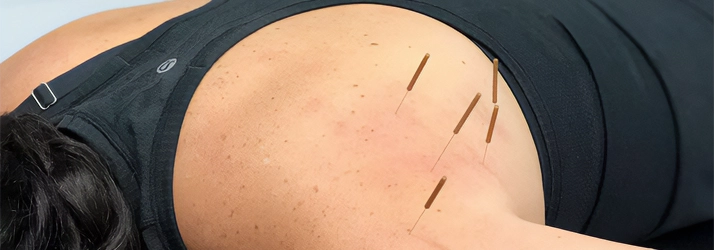
Dry needling is a physical therapy technique that involves the insertion of thin, solid needles into specific points in the body, often targeting trigger points or areas of muscle tension. Unlike traditional acupuncture, which is rooted in traditional Chinese medicine and focuses on balancing the body's energy flow, dry needling is based on Western medicine principles and is primarily used to alleviate musculoskeletal pain and dysfunction.
Here are some key points about dry needling in physical therapy:
-
Targeted Treatment: Dry needling targets "trigger points," which are knots or tight bands of muscle fibers that can be a source of pain and discomfort. By inserting needles into these trigger points, physical therapists aim to release muscle tension and improve blood flow to the affected area.
-
Pain Relief: The insertion of needles can stimulate the body's natural healing processes. This may lead to pain relief, reduced muscle tension, and improved range of motion in the affected area.
-
Myofascial Pain: Dry needling is often used for myofascial pain syndrome, a condition characterized by pain and stiffness in the muscles and soft tissues. It can also be beneficial for conditions such as chronic pain, muscle strains, and other musculoskeletal issues.
-
Different from Acupuncture: While dry needling uses acupuncture-like needles, it's important to note that it is distinct from acupuncture. Acupuncture is based on traditional Chinese medicine and involves stimulating specific energy meridians in the body, while dry needling is based on anatomical and physiological principles and focuses on relieving muscle-related pain and dysfunction.
-
Individualized Treatment: Dry needling is typically incorporated into a broader physical therapy treatment plan. The specific points and techniques used are tailored to the individual patient's needs and symptoms.
-
Minimal Discomfort: The needles used in dry needling are very thin, and the procedure is generally well-tolerated by most patients. Some people may experience mild discomfort or muscle twitching during the treatment.
-
Potential Benefits: Dry needling may provide short-term relief for some patients, but the long-term effectiveness can vary. Some people experience immediate improvement, while others may require multiple sessions for lasting results.
It's important to receive dry needling from a licensed and trained healthcare professional, such as a physical therapist, who has undergone specialized training in this technique to ensure safe and effective treatment. Patients considering dry needling should consult with a healthcare provider to determine if it's an appropriate option for their specific condition and symptoms.